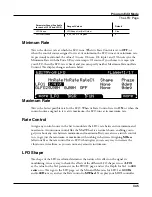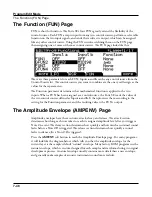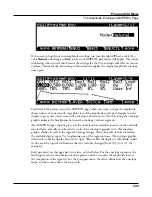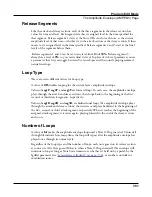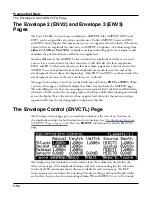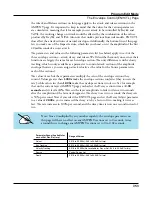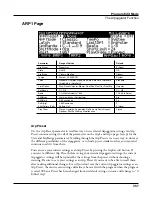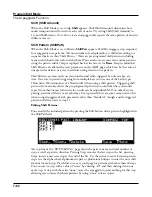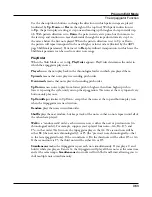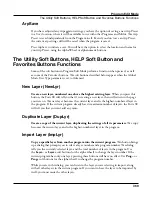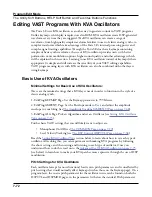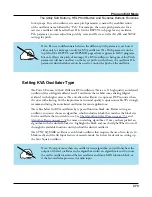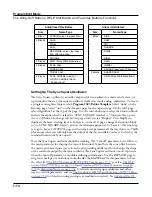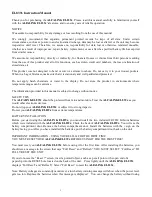
Program Edit Mode
The Arpeggiator Function
7-59
Arpeg
: Notes are arpeggiated only when the Latch switch is turned on while notes are held.
Arpeg latches any keys that are being held when the Latch switch is turned on. Latched
keys continue arpeggiating after they are released until the Latch switch is turned off.
Additional notes that you play after the Latch switch has been turned on become part of the
arpeggiation, and they drop out of the arpeggiation as soon as you release them.
Add:
Notes are arpeggiated only when the Latch switch is turned on while notes are held.
Add latches any keys that are being held when the Latch switch is turned on, and also latches
any notes played after this. Latched keys continue arpeggiating after they are released until
the Latch switch is turned off.
Auto:
Every note you play is automatically latched, and the Arpeggiator runs as long as
you hold at least one arpeggiated note. As long as you keep holding on at least one note (it
doesn’t have to be the same note the whole time), every note you play in the arpeggiation
range gets latched.
Autohold
is similar to Auto. Holding at least one arpeggiated note on and playing other
notes latches those notes. Unlike in Auto mode, if you stop holding at least one arpeggiated
note on, the arpeggiation continues playing (although you can’t latch any more notes). In
this case, if you strike another key within the arpeggiation range, you start a new arpeggiation
sequence. Autohold is useful for arpeggiating chords: when you play a chord, it gets latched,
and continues arpeggiating after you release the chord. When you play another chord, the
previous chord gets unlatched, and the new one gets latched. You can use the Arp On/Off
button to stop arpeggiation at any time.
1NoteAuto
is similar to Autohold, except only the last note played is latched (even if
previously played notes are still being held.) 1NoteAuto is specifically designed for use
with Shift Patterns (see
"Shift Pattern (ShiftPatt)" on page 7-62
) because Shift Patterns are
designed to be played from one note at a time (though you can use 1NoteAuto without a
Shift Pattern as well.) Using 1NoteAuto ensures that Shift Patterns will sound correct by only
allowing one note at a time to trigger the pattern. You can use the Arp On/Off button to
stop arpeggiation at any time.
1NoteAutoLow
and 1NoteAutoHi are also designed for use with Shift Patterns. They work
similarly to 1NoteAuto, except 1NoteAutoLow always latches the lowest note when holding
multiple notes, and 1NoteAutoHi always latches the highest note when holding multiple
notes. You can also use these latch types without a Shift Pattern if desired.
LimitOpt (Limit Option)
This parameter determines what the Arpeggiator does when it has shifted the currently
arpeggiated notes up (or down) to the value set by the ShiftLimit parameter.
Stop
causes the Arpeggiator to stop when it reaches the shift limit.
Reset
causes the Arpeggiator to return to its original pitch and repeat the cycle of notes.

